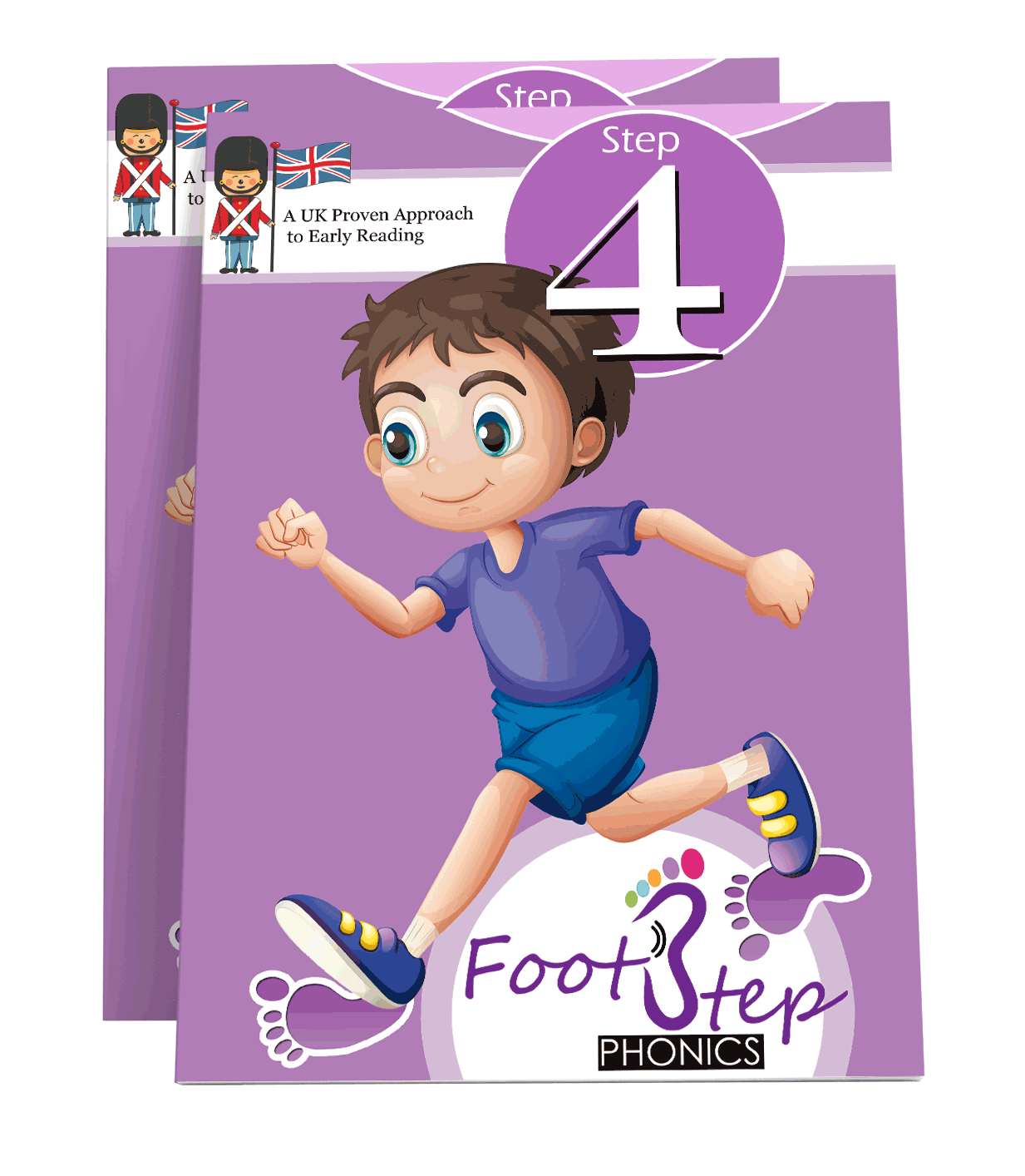TEACHING VOWEL DIGRAPHS - Initial and final
FootStep Phonics Step 4

Step up your student's reading game with Footstep Phonics Step 4!
This exciting book in the series covers everything from teaching vowel digraphs to consonant blends, ensuring your students excel in their pronunciation and become better readers.
They will love the colourful and engaging materials that make learning fun. With a focus on final consonant blends, Footstep Phonics Step 4 prevents end sound reduction and maintains intelligibility. Plus, with sentence correction and coverage for a full year of study, your budding readers will be on the path to success in no time.
Don't miss out on this amazing opportunity to help your students build a brighter future!
104 page student workbook
152 durable Flashcards
Covers 1 full year of study
Certificate of Achievement


Click below to view sample pages.











A UK Proven Approach to Early Reading.

.png)
Want to try out our products before purchasing a book? Visit our Fluent in English section for more details.
Mastering Vowel Digraphs: A Guide for Effective Teaching
Teaching vowel digraphs can be a challenging task, as these combinations of vowels often create unique sounds. However, with the right strategies and resources, educators can help students master these essential language skills. In this article, we will explore effective techniques to teach vowel digraphs and ensure students' success in reading and spelling.
-
Introduce the Concept:
Begin by explaining what vowel digraphs are - pairs of vowels that work together to produce a single sound. Common examples include "ai," "ea," and "oa." Use visual aids, such as flashcards or a phonics chart, to illustrate these digraphs and their corresponding sounds. Encourage students to identify digraphs in familiar words.
-
Provide Engaging Activities when teaching Vowel Digraphs:
Engage students with interactive activities that promote hands-on learning. Use worksheets, games, and puzzles that focus on specific vowel digraphs. For example, create word-building exercises where students match digraphs with corresponding pictures or complete sentences using the correct digraph. Incorporate technology by using educational apps or online resources that offer interactive digraph games and exercises.
-
Practice Reading and Writing when teaching Vowel Digraphs:
Reinforce students' understanding of vowel digraphs by providing ample reading and writing practice. Offer a variety of reading materials, such as books, poems, or short stories, that showcase words with different digraphs. Encourage students to write sentences or stories using words with specific digraphs. Explicitly teach spelling rules related to digraphs, such as "ie" for long "i" sounds and provide opportunities for students to apply these rules.
-
Differentiate Instruction when teaching Vowel Digraphs:
Recognize that students learn at different paces and have varied skill levels. Differentiate your instruction by providing additional support or enrichment activities based on individual needs. Offer small-group instruction or one-on-one sessions to address specific challenges or provide extra practice. Use assessment tools to identify areas of improvement and adapt your teaching accordingly.
Teaching vowel digraphs is crucial for developing strong language skills in students. By introducing the concept, providing engaging activities, and offering ample practice, educators can help students master these essential language patterns. With patience, creativity, and a variety of instructional approaches, teachers can ensure their students' success in reading and spelling vowel digraphs.
